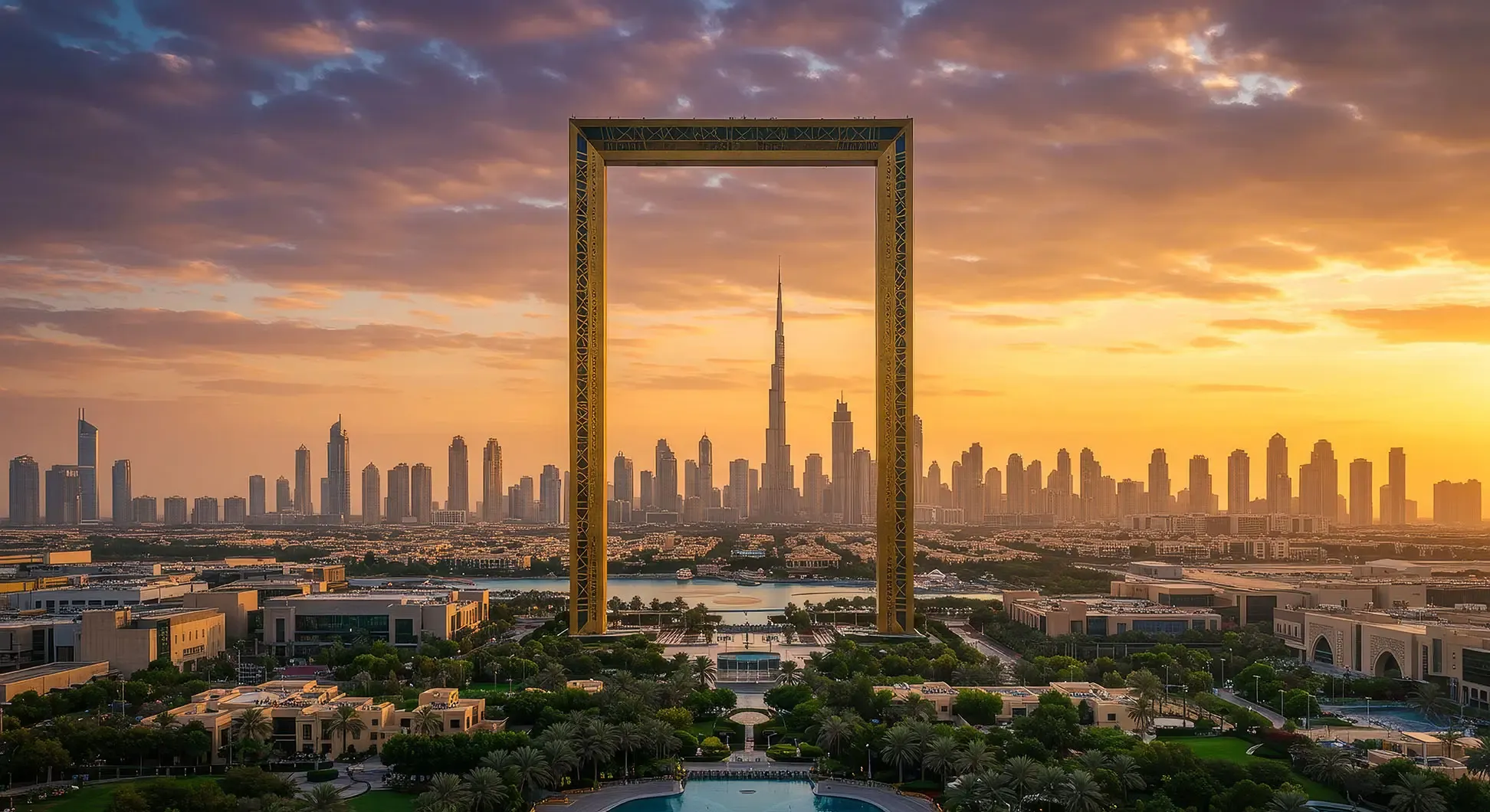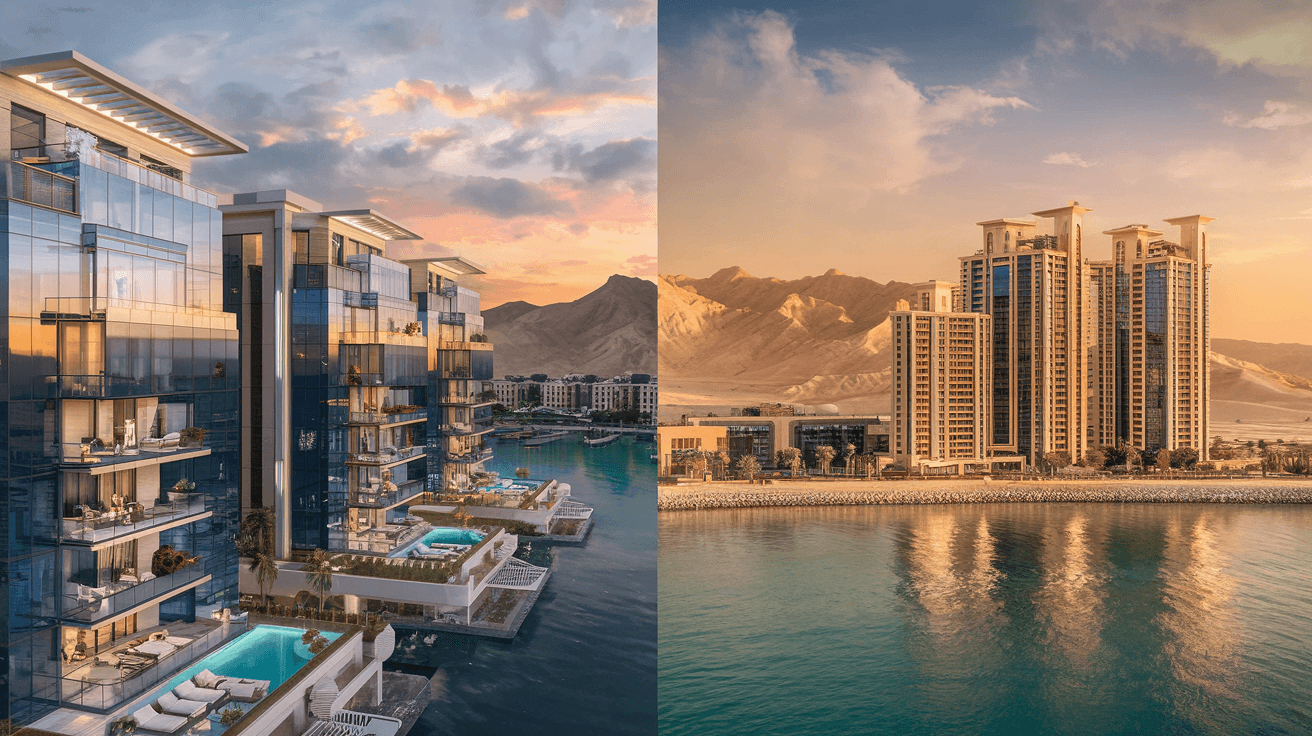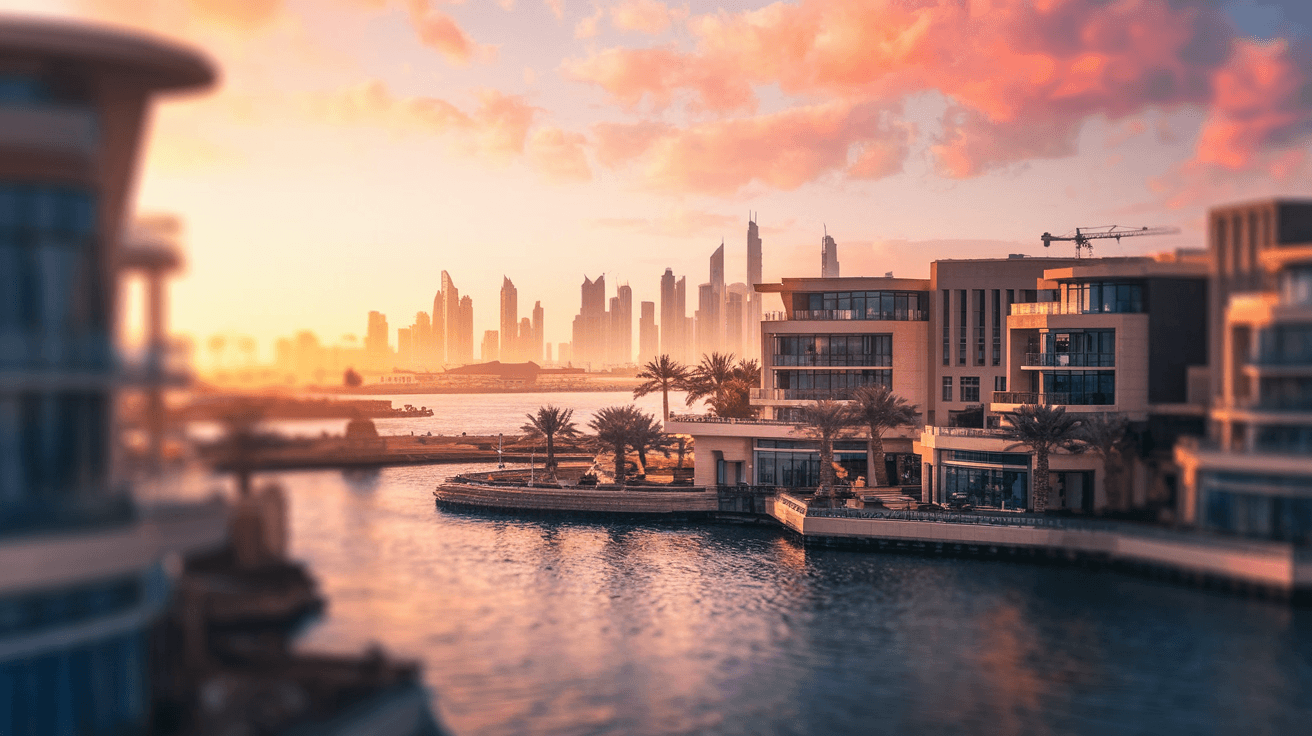Is RAK the "Next Dubai"? 5 Critical Metrics Investors Must Monitor
Explore whether Ras Al Khaimah is truly poised to become the next Dubai through analysis of 5 essential investment metrics that reveal RAK's growth trajectory and investment potential.
Table Of Contents
- Understanding RAK's Position in the UAE Property Landscape
- Metric #1: Economic Diversification and GDP Growth
- Metric #2: Infrastructure Development and Tourism Investment
- Metric #3: Property Value Appreciation Rates
- Metric #4: Foreign Direct Investment Trends
- Metric #5: Regulatory Environment and Government Initiatives
- Comparing RAK and Dubai: Similar Trajectories, Different Timelines
- Strategic Investment Opportunities in RAK's Emerging Market
- The Verdict: Is RAK Truly the "Next Dubai"?
Is RAK the "Next Dubai"? 5 Critical Metrics Investors Must Monitor
The question on many astute investors' minds: Is Ras Al Khaimah (RAK) positioned to become the UAE's next investment powerhouse? As Dubai's property market matures, savvy investors are increasingly looking toward RAK's emerging landscape for potentially higher returns and significant growth opportunities. But speculation alone isn't enough for discerning property investors who require substantive analysis before committing capital.
This comprehensive examination goes beyond surface-level comparisons to analyse five fundamental metrics that will determine whether RAK is truly following Dubai's remarkable development trajectory. By understanding these critical indicators, investors can make informed decisions about entering this market at the optimal time—potentially securing exceptional returns that early Dubai investors once enjoyed.
While RAK currently offers property values at a fraction of Dubai's premium rates, the question remains: Will this emirate undergo the same transformative growth that turned Dubai into a global investment destination? Let's examine the evidence through a data-driven approach that reveals RAK's true investment potential.
Understanding RAK's Position in the UAE Property Landscape
Ras Al Khaimah occupies a unique position within the UAE's property ecosystem. As the northernmost emirate, RAK combines natural beauty with strategic positioning—just 45 minutes from Dubai International Airport and featuring 64 kilometres of pristine coastline. Unlike the already densely developed Dubai and Abu Dhabi markets, RAK represents an emerging opportunity with substantial room for appreciation.
The emirate's current property market capitalisation stands at approximately AED 125 billion—merely 8% of Dubai's estimated AED 1.5 trillion market. This disparity highlights not only the significant difference in market maturity but also points to RAK's considerable growth potential. Early-stage markets historically deliver superior returns for investors who enter before widespread market recognition drives prices upward.
RAK's current appeal stems from its balanced value proposition: significantly lower entry points than Dubai (often 40-60% less per square foot) while maintaining proximity to major UAE business centres and transportation hubs. This combination creates a compelling case for investment, particularly for those who recognize how Dubai's own trajectory unfolded decades earlier.
Metric #1: Economic Diversification and GDP Growth
The foundation of any sustainable property market lies in its underlying economic strength. RAK's economic transformation provides compelling evidence of a market preparing for significant growth.
RAK's GDP has maintained an impressive average annual growth rate of 5-7% over the past five years, outpacing the broader UAE average of 3-4%. More importantly, this growth stems from deliberate economic diversification rather than reliance on hydrocarbon resources. The emirate has strategically developed multiple economic pillars:
- Manufacturing now constitutes approximately 30% of GDP
- Tourism contributes a rapidly growing 15% share
- Free zones housing over 15,000 companies from 100+ countries
- Building materials production leveraging natural limestone resources
This diversification strategy mirrors Dubai's early development phases, when that emirate began reducing oil dependency by building alternate economic engines. RAK's industrial base provides employment stability and population growth—two crucial drivers of sustainable property demand.
The RAK Economic Zone (RAKEZ) has attracted more than $1.5 billion in foreign investment in the past three years alone, creating a solid employment foundation that supports housing demand across multiple segments. These economic fundamentals are developing at precisely the pace needed to support meaningful property appreciation over the next 5-10 years.
Metric #2: Infrastructure Development and Tourism Investment
Infrastructure development serves as both a leading indicator and catalyst for property market growth. RAK's current infrastructure initiatives demonstrate clear government commitment to creating the foundation for long-term property appreciation.
The emirate has allocated AED 10 billion to infrastructure development through 2025, focusing on several transformative projects:
- Expansion of Ras Al Khaimah International Airport to accommodate 2 million passengers annually
- Development of integrated transportation networks including expanded highways connecting to Dubai and Abu Dhabi
- Significant investments in power generation capacity, including sustainable energy initiatives
- Water infrastructure upgrades to support larger population centres
Particularly noteworthy is RAK's tourism infrastructure investment, which mirrors Dubai's early focus on visitor experiences as a catalyst for broader development. The emirate has committed AED 4.5 billion to tourism projects alone, including:
- The Wynn Resort on Al Marjan Island—a US$3.9 billion integrated resort that will transform RAK's luxury tourism sector
- Expansion of adventure tourism infrastructure on Jebel Jais, the UAE's highest mountain
- Development of multiple 5-star beachfront properties along the coast
These tourism investments create immediate construction activity while establishing foundations for long-term visitor growth—a pattern that consistently drives property value appreciation. Dubai's early focus on tourism infrastructure preceded its property boom by approximately 5-7 years, suggesting RAK may be approaching a similar inflection point.
Metric #3: Property Value Appreciation Rates
Current appreciation data provides perhaps the most compelling evidence of RAK's emerging status as an investment destination. While absolute prices remain substantially below Dubai levels, the rate of appreciation tells a more interesting story.
RAK's premium waterfront properties have recorded average annual appreciation of 8-12% over the past three years, compared to Dubai's more mature 5-7% for comparable properties. This accelerated growth rate echoes patterns seen in Dubai approximately two decades ago, when that market began its steepest appreciation curve.
Particularly noteworthy are the appreciation rates in master-planned communities such as:
- Al Marjan Island: 15% average annual appreciation since 2020
- Mina Al Arab: 11% average annual appreciation with significantly increased transaction velocity
- Al Hamra Village: 9% average annual appreciation with notably reduced inventory levels
These appreciation rates, while impressive, still occur within a market where average luxury property prices remain at AED 900-1,200 per square foot—compared to Dubai's AED 2,500-4,000+ in premium locations. This price differential, combined with accelerating appreciation rates, creates the ideal conditions for potential exponential growth as the market matures.
Investing in RAK Property: Unlocking Exceptional Returns and Growth reveals that early investors in premium RAK developments have already captured significant value, with some off-plan investments appreciating 25-30% between launch and completion—a pattern reminiscent of Dubai's most dynamic growth periods.
Metric #4: Foreign Direct Investment Trends
Foreign direct investment (FDI) serves as a critical leading indicator for property market potential. RAK has systematically enhanced its appeal to international investors through regulatory reforms and targeted incentives.
The emirate has attracted AED 3.7 billion in foreign direct investment in 2022 alone—a 15% increase over the previous year despite global economic headwinds. This investment influx spans multiple sectors:
- Manufacturing (31% of FDI)
- Real estate development (27%)
- Tourism and hospitality (22%)
- Technology and innovation (11%)
- Other sectors (9%)
Particularly significant is the diversity of investment sources, with significant capital inflows from:
- Europe (especially UK, Germany, and Switzerland)
- South Asia (India, Pakistan)
- East Asia (China, South Korea)
- North America
- GCC neighbours
This geographical diversity in investment sources creates resilience against regional economic fluctuations. When comparing RAK's current FDI patterns to Dubai's historical data, we see striking similarities to Dubai's 2000-2005 period—just before that emirate's most dramatic growth phase.
The increasing presence of multinational corporations establishing regional headquarters in RAK also mirrors Dubai's early corporate migration pattern. These companies bring high-income professionals who drive demand for premium residential properties, creating a virtuous cycle of appreciation.
Metric #5: Regulatory Environment and Government Initiatives
Government policy serves as both catalyst and foundation for sustainable property market growth. RAK has implemented several forward-thinking regulatory changes that signal strong governmental commitment to property market development:
- Introduction of renewable 10-year property investor visas for investments exceeding AED 2 million
- Streamlined property registration processes reducing transaction times by 60%
- Enhanced protections for foreign investors including 100% ownership rights
- Improved transparency in property transactions through blockchain-based registry systems
- Tax incentives including zero personal income tax and minimal corporate taxation
These regulatory improvements address many obstacles that typically deter international property investors. By creating a predictable, transparent investment environment, RAK has established the regulatory foundation necessary for sustained market growth.
The government's 2030 Strategic Plan explicitly identifies property development as a cornerstone of economic growth, with targeted initiatives to increase housing supply in premium segments while maintaining market stability. This balanced approach helps prevent the boom-bust cycles that sometimes characterise rapidly developing markets.
Particularly significant is RAK's establishment of specialised courts for property disputes, creating judicial certainty that enhances investor confidence. This institutional development mirrors steps Dubai took approximately 15 years ago to professionalise its property governance structures.
Comparing RAK and Dubai: Similar Trajectories, Different Timelines
While the metrics above suggest RAK is following a Dubai-like development trajectory, important distinctions exist that investors must understand.
RAK appears to be approximately 15-20 years behind Dubai in its development cycle, but with several advantages that may accelerate certain aspects of growth:
- The ability to learn from Dubai's development experiences, avoiding certain planning challenges
- Access to more sophisticated financing and development partners from the outset
- Proximity to already-established UAE business hubs, creating immediate accessibility
- Modern infrastructure foundations that don't require fundamental rebuilding
- A more environmentally conscious development approach aligned with global sustainability trends
However, RAK also faces distinct challenges that Dubai did not encounter during its early growth phases:
- Competition from multiple established UAE property markets
- More complex regional geopolitical environment
- Higher expectations from sophisticated global investors
- Greater regulatory scrutiny of development financing
These differences suggest RAK won't simply replicate Dubai's exact growth pattern, but rather will follow a similar trajectory with modifications reflecting both its advantages and challenges. The resulting growth curve likely features a more measured but potentially more sustainable appreciation pattern.
Strategic Investment Opportunities in RAK's Emerging Market
For investors seeking to capitalise on RAK's growth potential, several strategic approaches merit consideration.
Premium waterfront properties represent perhaps the clearest opportunity, particularly in master-planned communities with established infrastructure. Exclusive RAK Off-Plan Projects offering pre-launch pricing provide the most favourable entry points, often 30-40% below eventual market values.
Investors should prioritize developments with these characteristics:
- Waterfront locations with protected views
- Connectivity to major transportation networks
- Proximity to established amenities and commercial centres
- Reputable developers with proven delivery track records
- Distinctive architectural features that will maintain premium positioning
Off-plan investments typically offer the greatest appreciation potential, especially when secured during pre-launch phases that may not be accessible to the general public. These opportunities provide both favourable pricing and the potential for staged payments that enhance return metrics.
The most strategic investment timing appears to be the current 2-5 year window, when infrastructure development has established sufficient foundations while pricing still reflects "emerging market" valuations rather than "established market" premiums.
The Verdict: Is RAK Truly the "Next Dubai"?
After thorough analysis of the five critical metrics, a nuanced conclusion emerges regarding RAK's potential as the "next Dubai."
RAK is indeed following a development trajectory with remarkable similarities to Dubai's earlier evolution, but with important contextual differences. The emirate demonstrates the fundamental growth drivers that transformed Dubai: economic diversification, infrastructure investment, regulatory improvement, appreciation acceleration, and international capital attraction.
However, RAK will likely develop its own distinct identity rather than becoming a carbon copy of Dubai. Its natural advantages—mountains, beaches, and less dense development—suggest a more balanced growth model potentially focusing on premium resort-style communities rather than ultra-high-density urban centres.
For investors, the critical insight is timing: RAK appears to be at an inflection point similar to where Dubai stood in the early 2000s, before its most dramatic appreciation phase. Current pricing still reflects "undiscovered" status despite mounting evidence of market momentum.
While declaring any market the "next Dubai" oversimplifies complex development dynamics, the data supports this conclusion: RAK represents the UAE's most promising emerging property market with appreciation potential that may parallel Dubai's historical growth trajectory while following its own unique development path.
Investors who recognise this opportunity before mainstream market awareness takes hold position themselves to potentially capture exceptional returns as RAK continues its transformation into a premier UAE investment destination.
Final Thoughts: Strategic Positioning for RAK's Growth Trajectory
The evidence across all five metrics provides compelling support for RAK's potential to become a premier UAE investment destination, potentially following a growth trajectory reminiscent of Dubai's transformative development. While RAK will forge its own unique path rather than precisely replicating Dubai's experience, the fundamental growth drivers are firmly established.
For discerning investors, RAK offers a rare opportunity: access to an emerging market with established legal frameworks, strong government backing, and clear growth indicators—all at entry points substantially below comparable properties in more mature UAE markets. This combination of security and growth potential rarely exists simultaneously in property markets.
The critical question isn't whether RAK will grow, but rather how quickly values will appreciate as the market matures. Current indicators suggest we're approaching an acceleration phase where appreciation rates could potentially exceed expectations, particularly in premium segments with limited supply.
Investors who position themselves strategically in RAK's highest-potential developments—particularly through exclusive off-plan opportunities with preferred pricing—may well capture the exceptional returns that characterised Dubai's most dynamic growth periods. As RAK continues its emergence as a distinct but complementary destination to Dubai, those who recognise its potential earliest stand to benefit most substantially.
Ready to explore RAK's exceptional investment opportunities? Contact Azimira Real Estate for exclusive access to premium off-plan properties and personalised investment guidance tailored to your financial objectives. Our team of RAK specialists will help you identify high-growth opportunities with strong appreciation potential in this emerging market.
Contact us today to schedule a private consultation and discover how RAK's transformative growth can enhance your investment portfolio.
Related articles
UAE Golden Visa: the clear path for UK non‑doms via RAK property
Reassess your residency with confidence. A RAK property from about £400k can unlock a 10‑year UAE Golden Visa, family residency, strong lifestyle benefits and compelling investment potential.

RAK Rental Yield Report: Comparing Short-Stay and Long-Let Investment Strategies
Comprehensive analysis of Ras Al Khaimah's rental yield performance comparing short-stay and long-term letting strategies with exclusive market insights for property investors.

RAK real estate for SMSF: unlock your golden years
Australian trustees are looking offshore. Discover why RAK real estate for SMSF can offer growth, diversification and a premium lifestyle, plus how to structure it compliantly.

